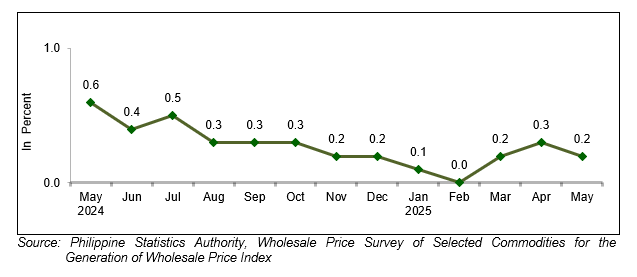- Ziggurat Realestatecorp

- Jul 6
- 3 min read
Inflation was slightly higher in June following a deceleration in the past four months, the Philippine Statistics Authority (PSA) reported on Friday, driven by increased utility costs.
Consumer price growth rose to 1.4 percent from May’s 1.3 percent, within the Bangko Sentral ng Pilipinas’ (BSP) 1.1- to 1.9-percent estimate but lower than the 1.5-percent median in a Manila Times poll of economists
Inflation a year earlier was markedly higher at 3.7 percent.

Core inflation, which strips out volatile food and energy prices, was unchanged at 2.2 percent in June from May.
Year to date, headline inflation remained below the BSP’s 2.0- to 4.0-percent target at 1.8 percent, while core inflation hit 2.3 percent.
The PSA said that June’s increase was primarily driven by higher inflation for housing, water, electricity, gas and other fuels, which rose to 3.2 percent from 2.3 percent in May.
A slower year-on-year decrease in the transport index — 1.6 percent from 2.4 percent — also contributed, it added.
The Department of Economy, Planning and Development (DepDev), meanwhile, said government efforts had helped ease food inflation — one of the primary drivers of consumer price growth last year — to 0.1 percent in June from 0.7 percent and 6.5 percent a month and a year earlier.
Rice inflation was a steeper -14.3 percent, in particular, down from -12.8 percent in May.
“The sharp decline in food inflation over the past year underscores the continued progress in our coordinated efforts to boost local production, improve logistics, and implement calibrated trade and biosecurity measures,” DepDev Secretary Arsenio Balisacan said in a statement.
He said the government would continue implementing initiatives to ensure that supplies of commodities remain stable and shield consumers from price pressures.
The Department of Agriculture, in particular, will intensify programs aimed at boosting the hog population, which has been devastated by an African swine fever outbreak.
An onion research center will also be established to focus on developing methods to combat diseases and pests and boost yields, the DepDev said.
The Department of Energy, meanwhile, has partnered with oil companies to provide fuel discounts to drivers of public utility vehicles (PUVs), non-PUVs, and transportation network vehicles as fuel prices have become volatile due to geopolitical tensions.
Nine oil companies were said to have committed to the initiative as of June 30.
“While the continued easing of food inflation is encouraging, we will maintain our vigilance against possible external and domestic risks,” Balisacan said.
“We will remain focused on strengthening interagency coordination in implementing timely, targeted, and evidence-based interventions to safeguard the purchasing power of Filipino households, ensuring that the much-needed support reaches the most vulnerable sectors of the country.”
The latest inflation result will likely allow the BSP to continue lowering key interest rates, currently at 5.25 percent following a 25-basis point cut last month.
The next policy meeting will be in Aug. 28 and the central bank will have the added benefit of July inflation data due to be released by the PSA on Aug. 5.
BSP Governor Eli Remolona Jr. said that two more rate cuts were possibly this year given low inflation and slow economic growth.
During last month’s rate-setting meeting, the BSP’s policymaking Monetary Board slashed its 2025 inflation forecast to 1.6 percent from 2.4 percent.
Those for 2026 and 2027, meanwhile, were slightly raised to 3.4 percent and 3.3 percent, respectively, from 3.3 percent and 3.2 percent.
Source: Manila Times



